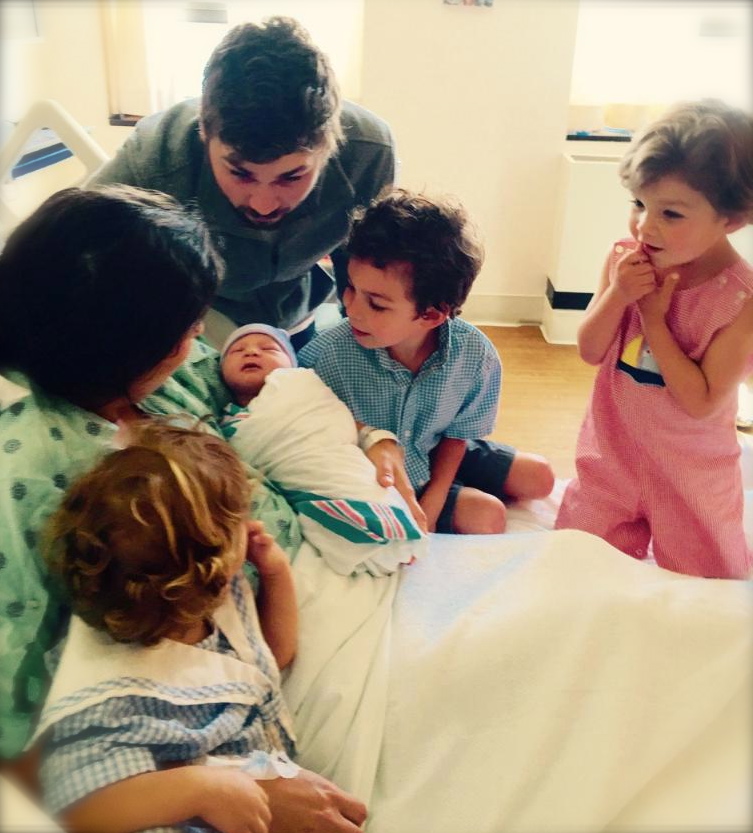Most blessed are you among women, and blessed is the fruit of your womb.
Luke 1:42
“What does it take to get the blessing?” I asked my spiritual director, Sandy, two years ago as I walked through the front door of her home in a huff.
“The question is not what it takes to get the blessing,” Sandy replied pointedly. “It’s what you perceive the blessing to be.”
Her comment came after I’d shared the news that my then-25-year-old son-in-law, had just been diagnosed with cancer—the same week Sandy had directed me to beg for the grace to truly know and experience God’s tender love for me.
“My son-in-law has cancer,” I spit out as I entered her home for our weekly meeting, where she was leading me through the 19th Annotation of St. Ignatius of Loyola’s Spiritual Exercises. “Is that how God demonstrates his tender love for me? By sending more suffering?” I scoffed. “I can’t seem to get the freaking blessing.”
“You keep thinking that the blessing means that everything goes well in your life,” Sandy countered. “A Catholic understanding of the blessing is that we know that God is with us and we trust his love for us no matter what circumstances life delivers. You’ve bought in to the prosperity gospel,” she pushed further, “and I want you to spend the next week renouncing that false belief from the core of your being.”
Bam! Sandy had hit the nail right on the head. Needless to say, it was a painful week of renunciation.
Before Sandy confronted the problem directly, it wasn’t so clear to me that I was a card-carrying member of the “Secret Prosperity Gospel Club.” But somewhere, I had definitely bought into a specific idea of what the “blessing” looks like: a happy marriage, successful kids, good health, financial stability, etc.—in other words, a life where all goes well. With that paradigm tucked deep into my mind, I’d spent much time and energy over the years not only comparing myself to others who appeared to have the “blessing,” but also wrestling with God about why his “blessing” had eluded me, especially as multiple tragedies visited our lives. The fact that Sandy pegged the problem so precisely prompted me, at long last, to nail to the cross the insidious lie that a blessed life equals a prosperous life, and that my life was therefore cursed.
Now let’s be clear: I do not attend a church that teaches the prosperity gospel; nor do I follow a single mega-church TV minister who preaches this popular, culture-friendly message. I am Catholic—one of more than a billion people in the world who attend a church where the crucified Christ is the focal point of our worship. In spite of that, a virulent strain of the prosperity gospel somehow seeped into my heart and brain; a “gospel” that essentially looks like this: I believe that my will should be done on earth. And when it’s not—for example, when people get sick, when they die young, when children have serious life crises, when finances crash—I conclude that God’s “blessing” is not on my life.
This false and frankly, un-Christian, belief wreaked havoc in my soul as I grasped for my way, my will to be done in the face of tremendous suffering, which included the deaths of a stepson, two brothers and my husband, Bernie—all in a few short years. It was after our lives imploded with loss—with this new diagnosis of cancer being the last straw—that I finally discovered the paradox that only a surrendered life is a blessed life, with the most blessed life of all being a life that is fully surrendered to God. Those are the terms of God’s kingdom.
I have learned that Christianity is not for wimps or for those who want the soft, easy way. No. It’s strong medicine for those who desire to be Christ-like, which means taking up one’s cross, dying to oneself and uttering the often gut-wrenching prayer: Father, if you are willing, take this cup from me; yet not my will, but yours be done.
Christians are called to live in a land where swords that pierce hearts are willingly embraced, where glory is revealed through open wounds, and where the fragrant aroma of holiness pours forth from souls who have been tried and tested—and found to be true. This is the hallowed ground of our Savior, and his Mother. And as their lives clearly tell us, it’s territory that’s accessed only by way of surrendered acceptance of the cross.
“The message of the cross is foolishness to those who are perishing, but to us who are being saved it is the power of God,” St. Paul tells us in his First Letter to the Corinthians (1 Cor. 1:18).
Truly, I am finally being saved. Through the cross and from my own twisted notion of what the “blessing” looks like. Better late than never.
Note: This article was previously published on Aleteia.





